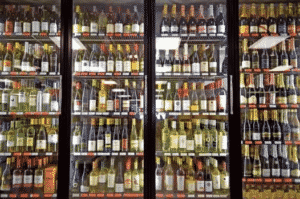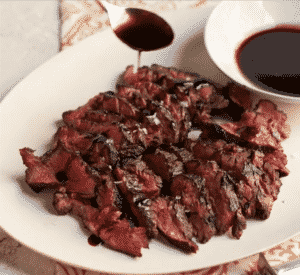
At Wine Country Travel, we love wine and cooking and often combine the two and use red wine in our cooking. Did you know that cooking with red wine dates back centuries?
The Egyptians were known to use red wine to accentuate the flavors of their dishes and red wine is a widely used ingredient for a variety of dishes across the world today.
In this piece, we’ll go through some of the do’s and don’ts of cooking with red wine.
Related: 10 Great Food Pairings with Wine
Things to do
Do consider using red wine instead of water
This is particularly true when cooking beef as red wine is often a perfect substitute to using water.
Most chefs prefer cooking red wine with beef, and this ensures the beef simmers instead of boiling. In addition, the complexity of flavor that red wine can bring to the meat is amazing. Most French meals have wine, and Beef bourguignon is a perfect example of mouthwatering meal reduced to a thick sauce.
Ready to try some delicious wine, see what Wine Country Travel has to offer!
Do choose young red wines
When cooking with wine, younger red wines generally have the bright fruity notes that you are looking for in cooking. You want to ensure that you add the wine early in the cooking process as the essence is to cook for long enough to evaporate the alcohol.
Do use drier red wines that aren’t overly tannic
The acidity in these styles of wine can add that boost of flavor to the dish that you are looking for without the risk of adding a chalky flavor to the dish that can come with using big, bold and heavily tannic red wines. The types of wine that work best tend to be Merlot, Pinot Noir or Sangiovese or even a lighter style cabernet.
Do consider white wines
Even though the focus of this article is cooking with red wine, don’t forget about white wines. They have low or no tannins and are less acidic. With fish, a more moderate wine is needed since it’s a fine meal. When preparing a dish of shellfish, put the wine in the pot while steaming and with salmon or bass, splash a bit of white wine over while frying or baking.
The advantage of white wine is that it’s versatile and a favorite amongst chefs. It is useful in browning fish, mushroom, chicken, and pork. One can also use it when preparing risotto for some acidity.
On the same note, full whites have a string and oaky flavor and may not be suitable for cooking. They have low acidic levels and may taste bitter when reduced, so keep this in mind.
Do cook with wine from a previously opened bottle
One of the best uses for opened wine is in the kitchen rather than in the glass. If the bottle has been opened recently and hasn’t been left open for far too long, then it’s perfectly fine to be used in cooking. If the wine has been opened for a while, you run the risk of it no longer being drinkable and taking on notes and flavors you don’t want in your food, which brings us to our next point.
Do only use wine that you would drink
There is an old adage that says that says “if you wouldn’t drink it, don’t cook with it.” This is absolutely true. If the wine doesn’t taste good on your palate, do you really want those flavors going into the dish or sauce you are making?
Related: Sparkling Wine vs Champagne
Things not to do

Don’t use cooking wine from your grocery store
The first rule is to avoid any wine in one’s grocery store that’s labeled as ‘cooking wine‘. These are not, in fact, real red wines and come with a high amount of sugar, acidity, and salt – all of which will not boost the flavors of any dish that’s being made. These ‘wines’ are not drinkable, and as we noted earlier, you only want to cook with wine that is drinkable. Spend a few dollars more and buy that bottle of drinkable wine. It will be well worth it.
Don’t use well-aged wines
We love the nuances in a well aged, complex bottle of wine. However, heat is the enemy of those nuances and will often kill those subtle flavors. It’s best to keep those well-aged bottles for drinking.
Ready to try some delicious wine, see what Wine Country Travel has to offer!
Don’t use pricey wines
When cooking, consider wine as an ingredient which will affect the outcome of the meal. However, it’s essential to consider one’s budget and choose a wine that best works with the dish without breaking the bank. Just because we say “cook with a wine that you would drink” doesn’t mean you need to cook with that $100 bottle. You can easily find a great wine for cooking for under $20. It’s easy to get the flavors you are looking for by choosing a reasonably affordable wine.
Don’t choose red wines with a high amount of tannins
A high concentration of tannin may result in bitterness or a chalky flavor to the dish that is undesirable in the food.
Don’t use the entire bottle
When cooking with wine for the first time, it’s tempting to use a lot of wine. However, this can make the wine to dominate the flavor and you won’t achieve the desired results. We often add the wine in small increments to achieve the desired effects.
Don’t use sweetened wines
Sweet wines have a high amount of sugars and deep fragrance. However, when used in cooking, the sugars often intensify and the perfumy nuances of the wine will be killed by the heat. Sweet wine, if just using a dash, can add some subtle flavoring to certain desserts or fruit salads, but you’ll want to add it near the end of the cooking process to preserve the subtleties of the wine.
Related: Vegan and Organic Wine
How to cook with red wine

When cooking, the goal is to achieve a delicious meal with a well-balanced flavor and adding red wine when cooking depends on the type of meal you are preparing.
When preparing sauces which will simmer for long such as stews and braises, add the wine early when simmering. It should be after browning the beef or vegetables. Allow the wine to reduce before adding stocks or other liquids. Some chefs prefer splashing red wine at the end when deepening a slow cooking tomato soup.
In the case of pan sauces, add red wine after setting the steak aside. Ensure the wine is reduced to a thick consistency and scrap browned portions. Add other liquids and continue reducing.
When preparing marinades, put the wine and the marinade in the pot. Boil thoroughly until all alcohol evaporates.
Conclusion
When cooking with red wine, it’s always important to remember that wine is tasty, but the alcohol needs to evaporate. Adding a hint of acidity to a dish can improve the flavor profile and unearth other tones, but too much alcohol remaining or tannin in the wine, more often than not, can ruin the dish. Perfecting the art of cooking with red wine takes time but once mastered, will leave dinner guests blown away by how delicious the food tastes. Happy cooking!
If you’re ready to try some delicious food and wine, Wine Country Travel offers special guided trips in Napa and Sonoma with the owner as your guide and he’ll also be your personal chef at the end of the day! It’s truly a one of a kind way to experience Wine Country.
Thank you ! Great advice ! I love to cook with wine!